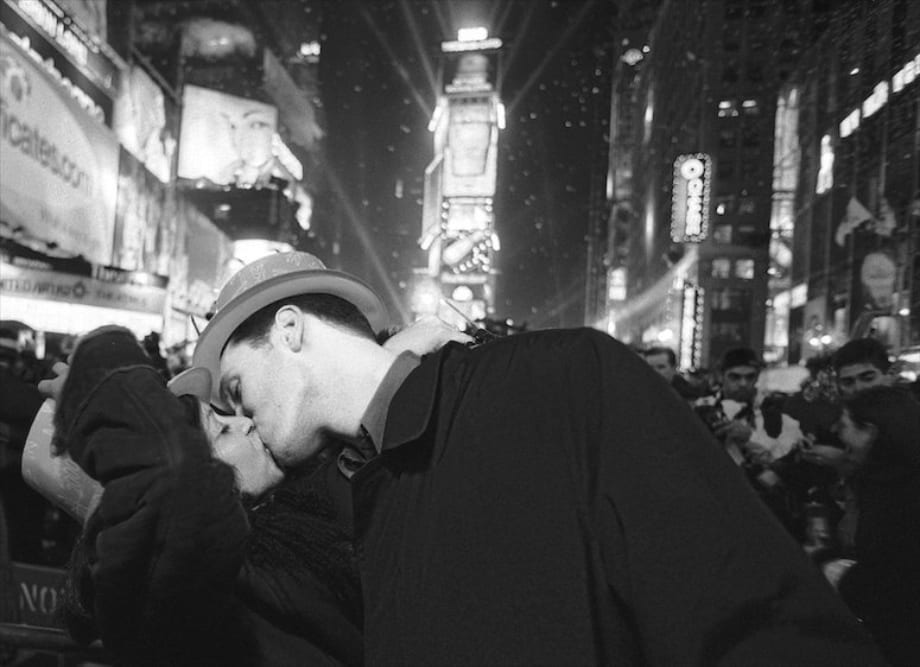Last month, I made a photograph at Père Lachaise Cemetery in Paris. A candid image. Unposed, unplanned, and deeply human.
As street photographers, we often work in the space between moments. We don’t ask, we react. That’s the job. But street photography is controversial. Some say it’s invasive, unethical—especially when photographing people during private or emotional moments in public places.
I understand that discomfort. But I also believe, strongly, that street photography is a noble pursuit. At its best, it’s about bearing witness. It’s about storytelling without words. It preserves what might otherwise vanish. While the world scrolls past, we stop time—if only for a fraction of a second. And when we do it right, our work adds something meaningful to the record of who we are.
As I walked through Père Lachaise—the final resting place of Oscar Wilde, Jim Morrison, Frédéric Chopin, Édith Piaf, Gertrude Stein, and many others—I saw her. She was resting her head on a gravestone. A quiet, intimate moment. Grief in stillness. I didn’t know who she was—only that the moment was powerful. I knew that if I stopped to ask permission, I’d lose it. So I made the photograph.
Then I introduced myself.
Her name was Manuela. She was kind and open. I told her what I had done. I offered to send her the image, and she gave me her email.
She replied with grace—and something more.
“Thank you for your offer; I gladly accept it. I am grateful because you captured a moment filled with emotion. Actually, Suzon was the daughter of my best friend.
She used to call me “Mom” and I would be very happy to receive this photo.Thank you. Her father, whom I have informed, is also eagerly waiting.
Thank you very much.
Goodbye. Manuela”
Later, on the plane home, I wrote to her again—this time with the photo attached. I explained that I’m a street photographer and educator, that I try to work with respect, and that I teach others to do the same. I told her that if she preferred, the image would never be shown.
Then, in a second message, came this:
Suzon wanted us to meet —and somewhere, she’s laughing still.
Not in the skies, but in the hush between heartbeats, right here in my chest.
Thank you —
for being here, for the beauty of your gift, for the quiet grace of your presence.
Since the day she left, Suzon has never stopped speaking to me.
In whispers.
In wind.
In wonders.
She speaks through impossible moments that only love could summon.
One winter evening, her father, hollowed out by grief, asked me to bring her flowers.
I wandered through Père-Lachaise, lost among the names and stones, hugging mimosa like it could warm my hands.
The cold stung my eyes. I sat on the curb, in tears, and whispered,
“I’m sorry, Suzon… I’m such a bad Mom2.”
And then — from nowhere, he appeared.
A rider on the storm, an American soul asking me, “Where’s Jim?”
A scene so surreal, I laughed through my tears.
He helped me rise. Together, we walked — ten steps.
There she was. Suzon.
He knelt, left a guitar pick on her stone, and walked away with a sprig of mimosa I placed in his hand.
Jim had sent his desperado.
Suzon had found a way to answer.
Another time, I collapsed again — and from the silence came a man in black, singing Piaf:
Non, rien de rien…
I asked him, “Who are you, Monsieur Farfadet?”
He smiled: “I’ve haunted this place for years…and today, I felt this is what you needed to hear.”
He led me to Piaf’s resting place, then faded into air.
I never saw him again.
But her message — clear as music.
Suzon sends me signs.
Always.
Little miracles tucked in grief.
A laugh. A stranger.
A song in the right key.
And yesterday, it was you.
Your presence,
your photograph,
your kindness — they were her way of saying:
“You see? I’m still here.”
Her father once feared she’d be forgotten.
But how could we forget Suzon?
That visit wasn’t even planned. We were headed to a show, when a voice inside me said: “Go to Père-Lachaise.”
So here we are.
And now, with Jean-Michel’s blessing and mine,
I ask:
Let your art become a thread in her story.
Let it echo where we can’t reach.
Let it carry her light into forever.
We will not forget Suzon.
We will not.
Street photography matters because it captures life as it unfolds—unscripted and unfiltered. It’s one of the few photographic genres rooted entirely in reality. No staging. No retakes. Just the world, as it is. At its best, it connects us to one another. It honors the human experience. It allows strangers to meet, unexpectedly, across time and space, in moments we don’t plan but are privileged to witness.
That’s what happened at Père Lachaise.
Being a street photographer means stepping out of your comfort zone. That looks different for everyone. For me, it often means pushing through the moment of hesitation. It’s easy to talk myself out of taking a picture—out of fear, doubt, or politeness. But I’ve learned to summon the bravado to shoot anyway. I can always decide later what to do—or not do—with the image. That courage doesn’t come easily, even after all these years. And not everyone is happy when I get caught stealing a candid moment. But I’ll say this: 97 percent of those encounters have been either positive or without incident. Most people respond with curiosity, not anger. Sometimes, they respond with something deeper.
I also remind myself: in most of the world, this isn’t a legal issue. In public spaces, you can photograph people without permission—and even exhibit, publish, or sell those images. What we’re dealing with isn’t law. It’s ethics. And that’s where intention matters. It’s different for everyone. It’s about how we work, why we shoot, and how we treat the people in our frames.
Still, I understand why some people are uncomfortable being photographed without permission. It can feel like a personal boundary has been crossed. Even in public, many feel a sense of ownership over how they appear and who sees them. Being photographed in a raw, emotional moment can be unsettling. There’s also the fear of being misrepresented or shared out of context. In a world where images can go viral in seconds, that fear is real—even if rare in my experience.
Some see the camera as a threat, not a tool for connection. That’s why how we approach street photography matters so much. We can’t control how people feel, but we can control how we work: with sensitivity, awareness, and the belief that every person we photograph deserves our respect.
Street photography becomes visual history. It records not just people, but the culture, energy, and spirit of a time. The way we look, the way we move, what we carry, what we wear—these are details future generations will study to understand us. That’s the responsibility we carry as street photographers—not just to observe, but to preserve. When we trust the moment and work with care, our photographs become more than images. They become memory. They honor life.
That day in Paris, I didn’t know who Manuela was. I didn’t know who Suzon was. I only knew the moment was real and full of feeling. I made the photograph, and afterward, I offered it back. What I received in return was something unexpected—grace, trust, and the chance to help keep a young woman’s memory alive.
Suzon’s story became part of mine. And now, through this image, it becomes part of yours too.’
Suzon Garrigues was 21 years old. She loved rock music and the socially conscious novels of Émile Zola. She was studying literature at Paris-Sorbonne University. On November 13, 2015, she was one of 90 people killed in the terrorist attack at the Bataclan theater in Paris. She had gone to the concert with her brother, who survived.












